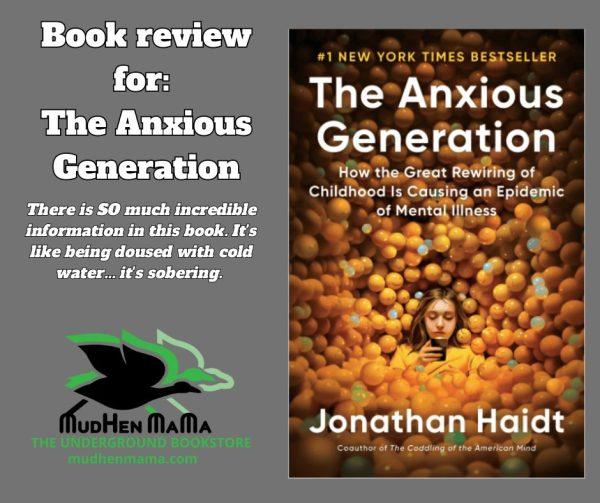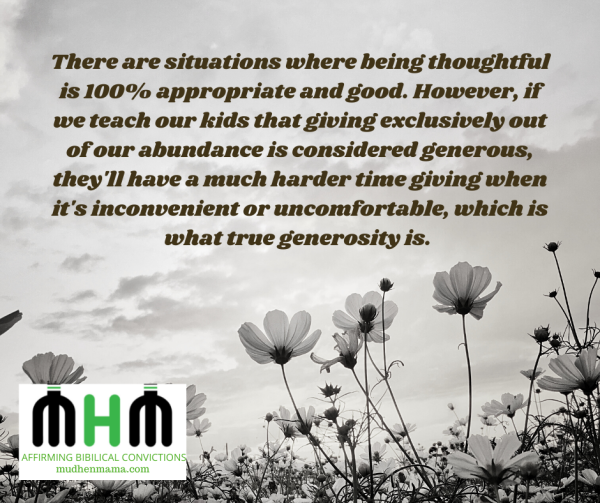
I had been wanting to read The Anxious Generation for quite a while. I had heard about it for a couple of years, but it just recently came to the top of my reading pile. I’ll have to say, I’m glad I read it. It was quite a sobering book.
Something is wrong
I think we all instinctively know, something is wrong. We know the amount of time that’s spent on smart phones is way too much. Just within the past few years, there seem to be many more kids that struggle with anxiety. And way too many are on medication for it. But still, we find ourselves using smartphones. Guilty. As. Charged.
We, as parents, need to set the example and exercise self control. We can, in theory, demand our children lay off the phones, but if we’re constantly on them, it makes it that much harder for our kids to take it seriously. And with the data that is laid out in this book, we really don’t have any excuse. We have got to do this.
Yes, the phones make things easier in a lot of ways. Our kids are occupied while we do whatever it is we need to do. Our reasoning can be completely legitimate. However, the ends do not always justify the means. Especially in this case.
Go play
Jonathan Haidt, the author of The Anxious Generation, gives us study after study that clearly delineates how we got to this moment, and why. Ultimately, he urges us to have our kids delay getting a smartphone, use it for fewer hours, and play more. As in, a LOT more. Whether that’s outside on a playground, or walking around the neighborhood, or playing sports… something. Anything. Just not on screens. Kids need this more than we could possibly imagine.
God created us to be interactive. Although it may seem that social media allows interactive relationships to take place, it doesn’t. “Children learn through play to connect, synchronize, and take turns… Attunement and synchrony bond pairs, groups, and whole communities. Social media, in contrast, is mostly asynchronous and performative. It inhibits attunement and leaves heavy users starving for social connection” (page 65).
Risky
Sometimes sending our kids to play outside in the real world without us may feel risky. They can break a bone, or have an argument with their sibling or friend, or fall and get a bloody knee. However, keeping our kids inside in the comfort of our home and watchful eyes of a parent or caregiver feels safe. Plus, no complaining when children are on screens since they’re mesmerized!
What may not be intuitive, though, is that whether we keep them “safe” at home on their i-pads or we send them outside to navigate a playground with hot slides and monkey bars, we are putting them at risk of something. Just different kinds of risk, but risk nonetheless.
When we send them outside to face the real world as all children have done since the beginning of time, they learn how to interact with one another. They are forced to figure things out. This is a very good, normal thing for them to do. But with endless time on screens and interacting with social media and video games, several problems come up. Psychological complications such as depression and ADHD are just two issues that can rear their ugly heads. Besides that loss of interactions with others that teach important life lessons.
A couple small criticisms
I have to say, that although I appreciated a lot of Haidt’s suggestions for the “Collective Action for Healthier Childhood,” I actually wasn’t fully on-board with some of his advice. Haidt emphasized that our children should be allowed to take risks that may make us uncomfortable, such as sending your child out to the store on their bike to pick up something for you. Clearly, I know this would depend a lot on each family’s situation. However, I’m not sure that we can send our young kids to do the same kinds of things that were normally done decades ago. Yes, it was normal back then, but it’s not normal now.
Many more families now have two working parents. That implies that there aren’t nearly the number of eyeballs looking out of their windows at what is going on outside. I agree that kids need more responsibilities and less protection from the outside world, but I would lean to waiting a little longer before launching them out.
Also, the majority of families may recognize the smartphone problem, but refuse to do anything about it. So it’s hard to build a tribe. Why? Parents are incredibly busy and they don’t want to rock the family boat. The short term loss of complaining, whining kids is just too much for many. They don’t see the long term positives of less screen time. And even if they do, ripping that band-aid off is just too painful. That leaves just a few families willing to do what needs to be done. Which, depending, can make it hard to make a dent into decreasing screen usage. That’s not an excuse to NOT move forward with doing what’s right, but it’s just a reality that Haidt doesn’t really address.
Our example
Personally, our family has had a hard and fast rule of no phones until high school (we’ve thankfully had one or two other like minded families that our kids could commiserate with! VERY helpful). Once they’re in high school, we have placed limits on their phones for social media. But for the most part, they have been allowed to use social media (minus Tick Tock – that’s a hard no for us) right around the age of 14. However, after reading this book, we’re seriously considering getting the equivalent of a flip phone for our next child until 16. She is not happy about this, but she also understands how problematic social media can be.
I think every family is going to do this differently. There is no one size fits all solution. Our kids are all different. However, there is clearly a problem and we can’t bury our heads in the sand and hand screens to our children indiscriminately any longer. We need to understand the risks to our children, and our responsibility as parents. We can claim ignorance no longer.
Overall, I thought this book had wonderful advice and information for us all to chew on. And I fully agree that:
page 290
- No smartphones before high school
- No social media before 16
- Phone-free schools
- Far more unsupervised play and childhood independence
There is SO much incredible information in this book. It’s like being doused with cold water – as I mentioned earlier, it’s sobering. I pray many of you read through this book, and are convicted to, minimally, reduce the amount of time your kids are on screens. Even if it’s hard (which it definitely is, but well worth it!). As well as kick your kids out of the house to explore the beauty of God’s world around them.
Our kids are too important to do otherwise.
FYI – Although this book was not written by a Christian, it does not conflict with a Biblical Worldview.










